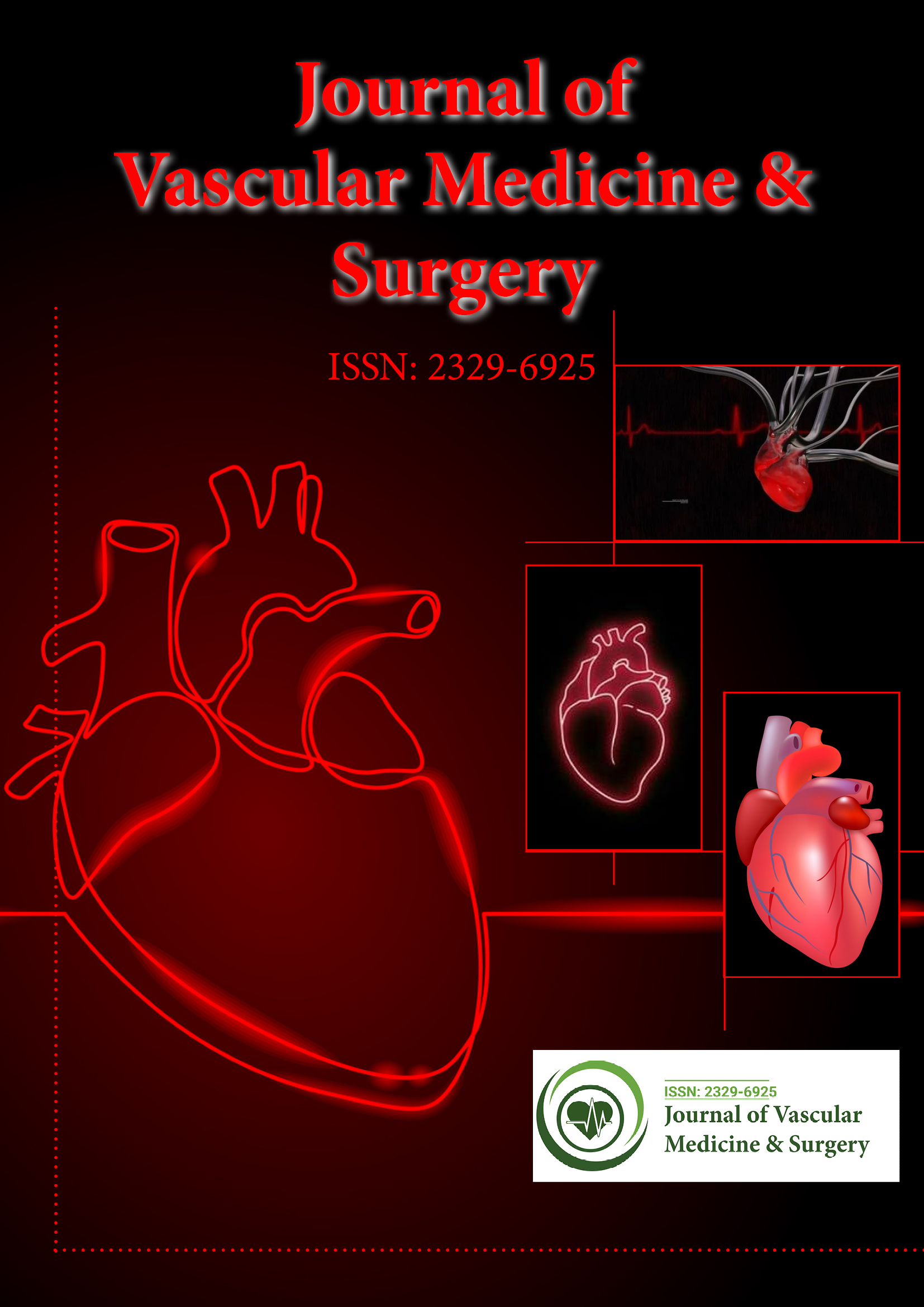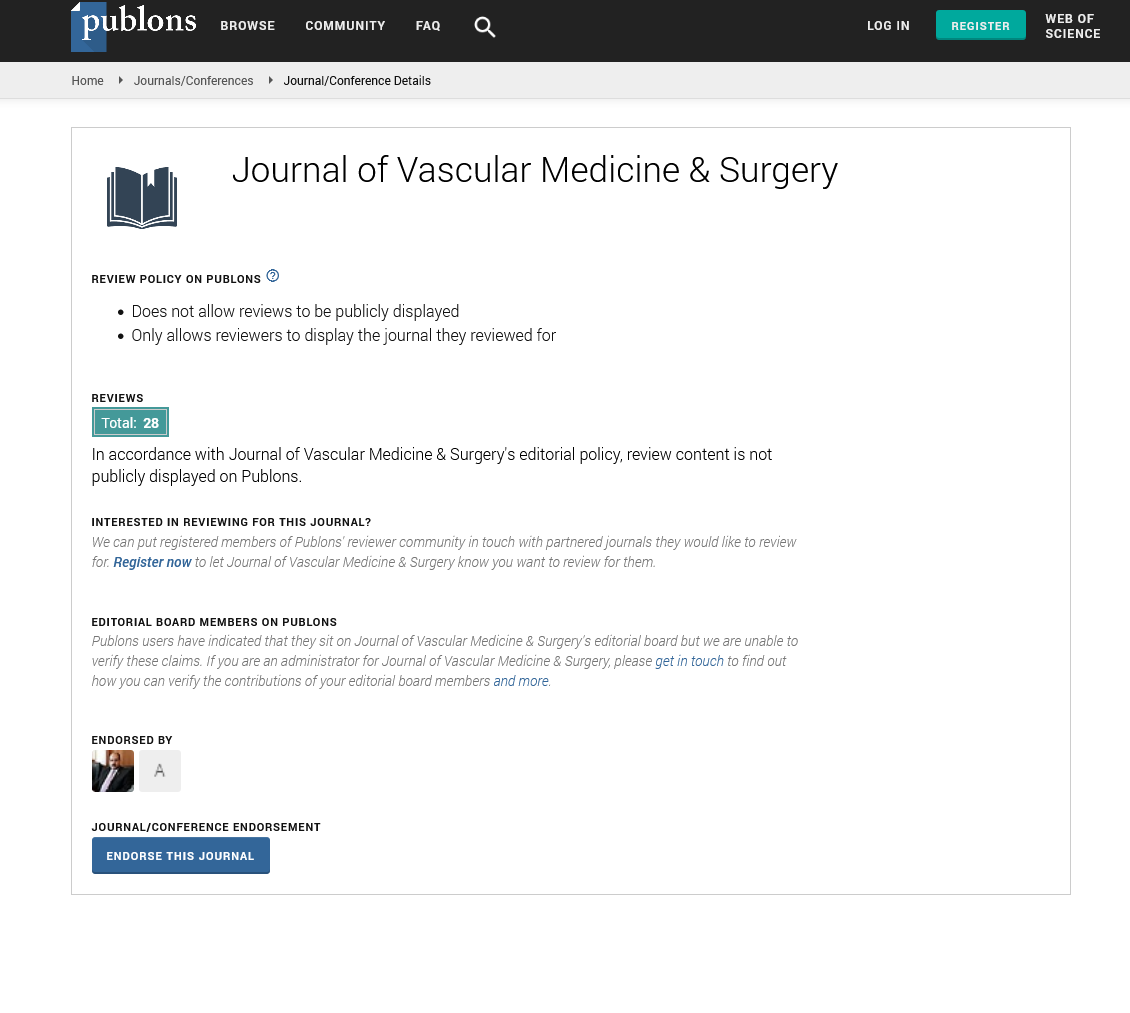Indexed In
- Open J Gate
- Academic Keys
- RefSeek
- Hamdard University
- EBSCO A-Z
- OCLC- WorldCat
- Publons
- Euro Pub
- Google Scholar
- SHERPA ROMEO
Useful Links
Share This Page
Journal Flyer

Open Access Journals
- Agri and Aquaculture
- Biochemistry
- Bioinformatics & Systems Biology
- Business & Management
- Chemistry
- Clinical Sciences
- Engineering
- Food & Nutrition
- General Science
- Genetics & Molecular Biology
- Immunology & Microbiology
- Medical Sciences
- Neuroscience & Psychology
- Nursing & Health Care
- Pharmaceutical Sciences
Opinion Article - (2024) Volume 12, Issue 4
Atherosclerosis and its Complications on Public Health Strategies for Reducing Cardiovascular Disease
Lauren Jensen*Received: 24-Jun-2024, Manuscript No. JVMS-24-26697; Editor assigned: 27-Jun-2024, Pre QC No. JVMS-24-26697 (PQ); Reviewed: 11-Jul-2024, QC No. JVMS-24-26697; Revised: 18-Jul-2024, Manuscript No. JVMS-24-26697 (R); Published: 25-Jul-2024, DOI: 10.35248/2329-6925.24.12.563
Description
Atherosclerosis is a long-term medical condition indicated by the thickening and tightening of the arteries as a result of plaque accumulation made of cholesterol, fat, and other materials. Serious cardiovascular conditions like peripheral artery disease, coronary artery disease, and stroke can result from this syndrome. As atherosclerosis is so common and is one of the world's major causes of morbidity and mortality, it is critical. Damage to the endothelium, the inner lining of the arteries, is the first step toward atherosclerosis. Multiple factors, such as smoking, high blood pressure, high cholesterol, and diabetes, might contribute to this damage. Low-Density Lipoprotein (LDL) cholesterol particles penetrate the arterial wall after causing damage to the endothelium. After that, these particles become oxidized, which starts an inflammatory reaction. One of the main factors in the development of atherosclerosis is inflammation. Monocytes, in particular, are white blood cells that move to the endothelium injury site. These monocytes become macrophages, which then become bubble cells by consuming the oxidized LDL particles. The first noticeable signs of atherosclerosis, fatty streaks, are created as bubble cells grow up. A fibrous cap forms over the lipid core as a result of smooth muscle cells from the artery wall spreading to the location of the fatty streaks, multiplying, and producing extracellular matrix proteins as the condition worsens.
Many risk factors contribute to the development of atherosclerosis. While High-Density Lipoprotein (HDL) cholesterol helps eliminate cholesterol from the bloodstream, lowering the risk, elevated levels of LDL cholesterol and triglycerides can contribute to plaque development. Elevated blood pressure has the potential to harm endothelium, increasing the risk to atherosclerosis. Chemicals in tobacco smoke harm the endothelium and encourage the development of plaque. Elevated blood sugar levels have the potential to harm blood vessels and exacerbate atherosclerosis. Overweight is linked to an elevated risk of atherosclerosis, especially central obesity. Many of the risk factors for atherosclerosis, such as obesity, high blood pressure, and diabetes, are associated with a lack of physical exercise. Consuming a diet high in cholesterol, trans fats, and saturated fats can raise the risk of atherosclerosis. Atherosclerosis is a condition that gets worse with age, and men are typically more susceptible than women who are not yet menopausal. Nevertheless, following menopause, women are more at risk. The chance of getting atherosclerosis may rise if there is a family history of cardiovascular disease. Different clinical manifestations can result from atherosclerosis, which can damage different areas of the cardiovascular system. Angina (chest pain) and myocardial infarction (heart attack) can result from atherosclerosis affecting the coronary arteries. Cerebral or carotid atherosclerosis can result in strokes or Transient Ischemic Phases (TIAs). Pain, cramping, and even death can result from peripheral artery atherosclerosis, especially in the legs.
Atherosclerosis can weaken the walls of the arteries, which can result in the creation of aneurysms, bumpy areas in the arteries that have the potential to burst and bleed severely. A combination of the patient's medical history, physical examination, and diagnostic testing are used to diagnose atherosclerosis. Doctors evaluate symptoms, risk factors, and family medical history. Signs that can be found during a physical examination include skin changes, bruits (abnormal sounds in the arteries), and decreased pulses. Blood tests are used to test for cardiovascular risk factors such as blood sugar, triglycerides, cholesterol, and others. An Electrocardiogram (ECG) can identify cardiac illness by logging the electrical activity of the heart. Stress testing measures how the heart reacts to physical strain and can identify coronary artery disease. Imaging methods that show the arteries and identify blockages or anomalies include ultrasound, Computed Tomography (CT) scans, Magnetic Resonance Imaging (MRI), and angiography. Medication, lifestyle changes, as well as surgical procedures are used to treat atherosclerosis. A nutritious diet that is low in cholesterol, trans fats, and saturated fats, frequent exercise, giving up smoking, and keeping a healthy weight are examples of lifestyle modifications. Atherosclerosis and its risk factors are managed using a variety of drugs. LDL cholesterol levels will be lowered by statins, blood pressure will be regulated by antihypertensives, and blood clot risk will be decreased by antiplatelet medicines. Medication for diabetes will regulate blood sugar levels. Blocked arteries are opened with a balloonequipped catheter, and the artery is maintained open with a stent implanted.
A graft is used to redirect blood flow around clogged coronary arteries. Treating risk factors that can be modified is necessary to prevent atherosclerosis. Global health is greatly impacted by the complicated, multifaceted illness known as atherosclerosis. It is essential to understand the pathophysiology, risk factors, clinical symptoms, and available treatments for this condition in order to effectively manage and avoid it. It is possible to prevent cardiovascular events and delay the advancement of atherosclerosis with a combination of medication, lifestyle modifications, and, when required, surgical procedures. To reduce the global burden of atherosclerosis, individual efforts and public health programs that promote heart-healthy practices are necessary.
Citation: Jensen L (2024) Atherosclerosis and its Complications on Public Health Strategies for Reducing Cardiovascular Disease. J Vasc Surg. 12:563.
Copyright: © 2024 Jensen L. This is an open-access article distributed under the terms of the Creative Commons Attribution License, which permits unrestricted use, distribution, and reproduction in any medium, provided the original author and source are credited.

